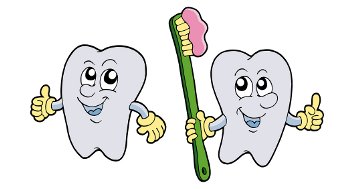
Fluorine
Fluorine General
| Name:Fluorine | Symbol:F |
| Type:Halogen | Atomic weight:18.998403 |
| Density @ 293 K: 0.001696 g/cm3 | Atomic volume:17.1 cm3/mol |
|
Discovered:
In 1530 Georgius Agricola noted the use of the mineral fluorspar (principally calcium fluoride) as a flux - it was added to the metal ores while they were processed in furnaces to promote fusing of the pure metal. The element fluorine was first isolated by Henri Moissan in 1886. Fluorine is an extremely hazardous element and earlier attempts to isolate it had lead to several blindings and fatalities. The origin of the name comes from the Latin word 'fluere', meaning to flow - hence the word flux. |
|
Fluorine States
| State (s, l, g):gas | |
| Melting point:53.6 K (-219.6 °C) | Boiling point:85.1 K (-188.1 °C) |
Fluorine Energies
| Specific heat capacity:0.82 J g-1 K-1 | Heat of atomization:79 kJ mol-1 |
| Heat of fusion:0.510 kJ mol-1 of F2 | Heat of vaporization : 6.62 kJ mol-1 of F2 |
| 1st ionization energy:1681 kJ mol-1 | 2nd ionization energy:3374.1 kJ mol-1 |
| 3rd ionization energy:6050.3 kJ mol-1 | Electron affinity:328 kJ mol-1 |
Fluorine Oxidation & Electrons
| Shells:2,7 | Electron configuration:[He] 2s2 2p5 |
| Minimum oxidation number:-1 | Maximum oxidation number:0 |
| Min. common oxidation no.:-1 | Max. common oxidation no.:0 |
| Electronegativity (Pauling Scale):3.98 | Polarizability volume:0.634 Å3 |
Fluorine Appearance & Characteristics
| Structure:cubic crystals in solid phase | Color:pale yellow |
| Hardness:mohs | |
|
Harmful effects:
Fluorine is highly toxic and corrosive. |
|
|
Characteristics:
Fluorine is the most reactive and the most electronegative of all the elements. Uses: Fluorine and its compounds are used in uranium processing and in the production of fluorochemicals, including many high-temperature plastics such as Teflon. |
|
Fluorine Reactions
| Reaction with air:none | Reaction with 6 M HCl:vigorous, ⇒ HF, OF2, ClF3 |
| Reaction with 15 M HNO3:⇒ NO3F | Reaction with 6 M NaOH:vigorous, ⇒ O2, NaF |
Fluorine Compounds
| Oxide(s):OF2 | Chloride(s):ClF, ClF3, ClF5 |
| Hydride(s):HF (fluoric acid) |
Fluorine Radius
| Atomic radius:50 pm | Ionic radius (1+ ion): pm |
| Ionic radius (2+ ion): pm | Ionic radius (3+ ion): pm |
| Ionic radius (2- ion): pm | Ionic radius (1- ion):119 pm |
Fluorine Conductivity
| Thermal conductivity:0.0277 W m-1 K-1 | Electrical conductivity: S cm-1 |
Fluorine Abundance & Isotopes
| Abundance earth's crust:585 parts per million by weight, 104 part per million by moles | |
| Abundance solar system:500 parts per billion by weight, 30 parts per billion by moles | |
| Cost, pure:$190 per 100g | |
| Cost, bulk:$ per 100g | |
|
Source:
In nature, fluorine occurs mainly in the minerals fluorspar (CaF2) and cryolite (Na3AlF6). Commercially, production of fluorine involves the electrolysis of a mixture of molten potassium fluoride and hydrofluoric acid. Fluorine gas forms at the anode, and hydrogen gas at the cathode. |
|
|
Isotopes:
Fluorine has 11 isotopes whose half-lives are known, with mass numbers 15 to 25. Of these only one is stable, 19F. |
|
Fluorine Other
|
Other:
|
|
Prev: Oxygen Next: Neon |